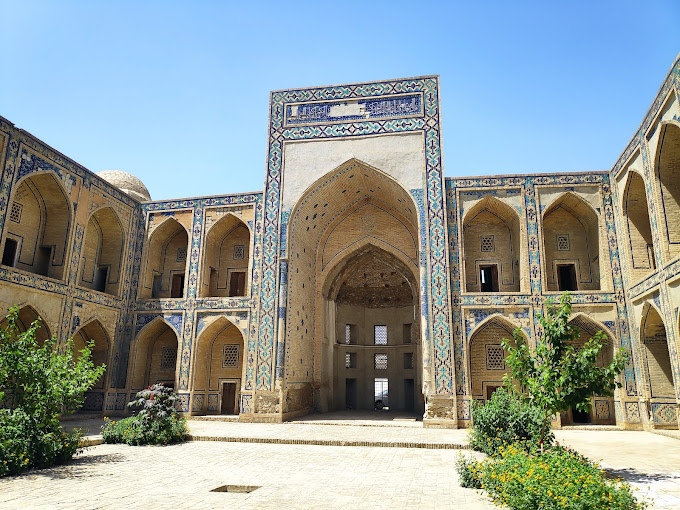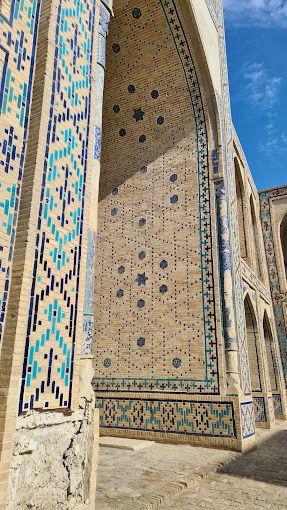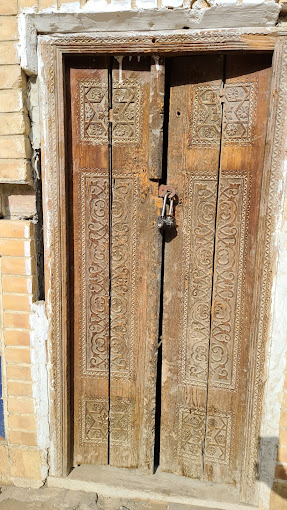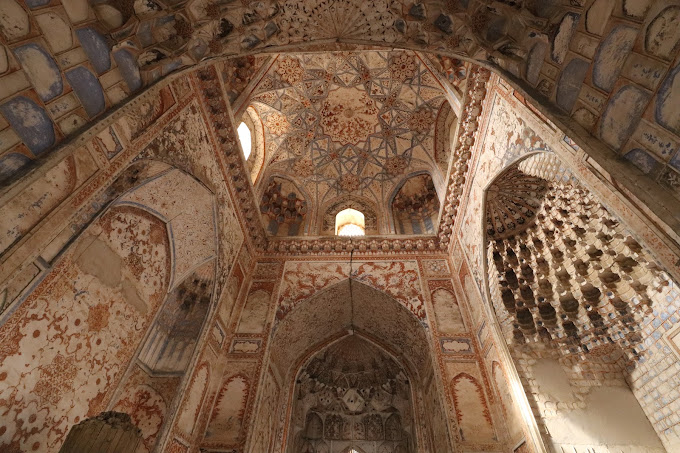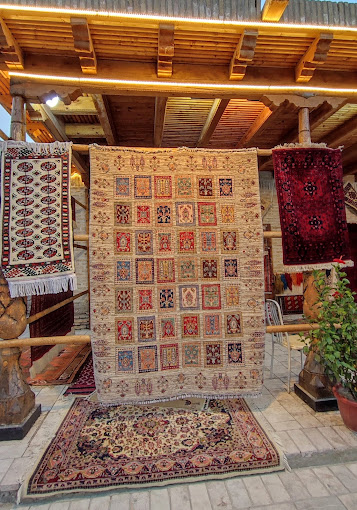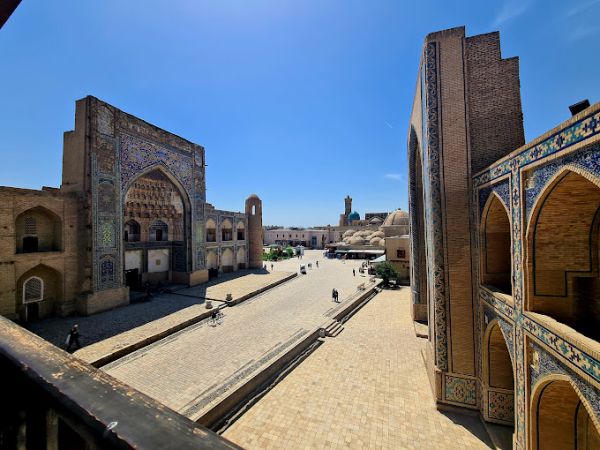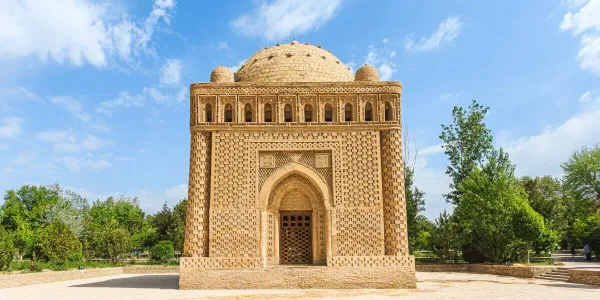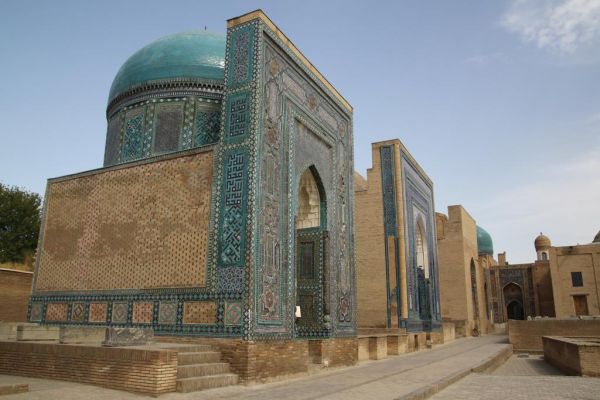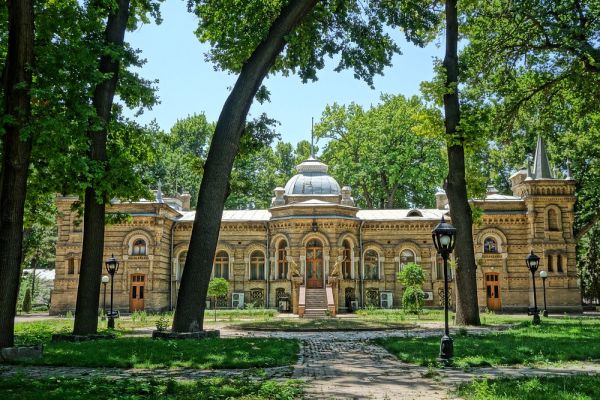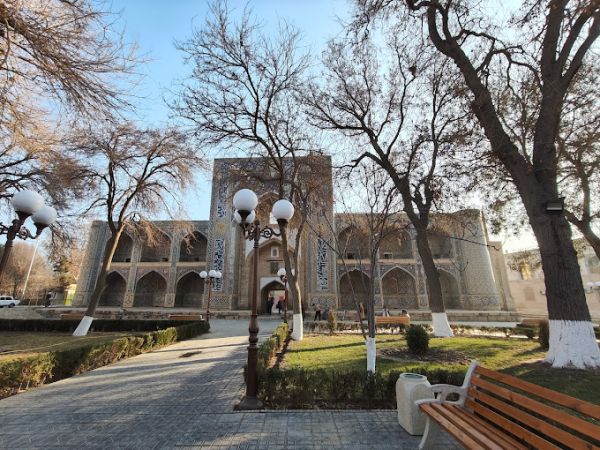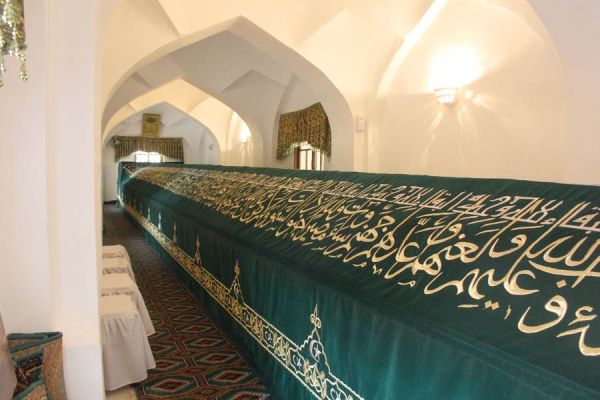Ulugbek Madrasah in Bukhara
During the reign of Ulugbek, a descendant of Amir Timur, education was actively developing. Engaged in educational activities, Ulugbek built many famous madrasas in various cities of the country, including Bukhara with its strict Muslim principles. The Bukhara madrasah of Ulugbek was built even earlier than the well-known similar educational institutions in Samarkand (Samarkand madrasah of Ulugbek) and Gijduvan, and became their prototype.
In the photo of the Ulugbek madrasah, you can see that the inside of the facility looks very neglected and is a platform for souvenir dealers. According to the latest tourist reviews, the madrasah is undergoing extensive restoration, however, it is possible to get inside and even climb to the roof. Sometimes builders and security guards let them in for a nominal fee of 10,000 soums, sometimes for free, but without completed repairs, the building is not so impressive. Visit to the museum of calligraphy — 5,000 soums. Previously, the entrance fee for foreign tourists was $ 2, for Uzbek citizens — 10,000 soums. Currently, there is no need to pay for an external inspection of the building.
There is a small recreation area with benches in front of the madrasah. But it's hard to stay in the square in the summer — there are no canopies and no shade. Plan a visit to the madrasah and other attractions of the historical part of Bukhara in the morning or evening. Besides being cool, it's the best light for photos at this time.
Construction history
The madrasah building was erected in 1417. The construction was carried out by the best architects of that era, Ismail Isfagani and Nazhmetdin Bukhari. But it took on a modern look with majolica cladding in 1585 during restoration work. Contemporaries recall that on his first visit to the madrasah, Ulugbek presented all the students and professors with expensive gifts.
Initially, the educational institution, built by order of Ulugbek, was designed to train 80 students. Much attention was paid here to the study of mathematical and astronomical sciences, Arabic language and religion. According to historical data, up to 150 students studied here at the same time. They had not only a place to live, but also a decent scholarship.
Architecture
The building still looks very harmonious and balanced today. The rather strict and modest decoration does not prevent the building from being majestic and considered one of the main works of architecture of that time.
The madrasah is an impressive rectangular building. The facade of the main entrance is decorated with a large portal. The configuration of the structure differs from many of its kind. Traditionally, in most madrassas, the widest central corridor leads to the courtyard. This tradition has been violated in the Ulugbek madrasah. The corridor leading from the door is divided into two parts, the first of which leads to the mosque, the second leads to the study hall. The entrance group of the educational institution was decorated with a carved excerpt from the Koran stating that every true Muslim must strive for knowledge. This saying was a kind of motto of Ulugbek himself. There is another inscription nearby that says that God's blessing awaits those who have comprehended the wisdom of books.
The wise ruler is known throughout the world for his numerous scientific studies in the astronomical field. And the astral decoration of the madrasah reflects Ulugbek's desire to comprehend the secrets of the firmament. If you look closely at the patterns and ornaments on the walls of the building, you can see that they were applied in various techniques — this is due to the numerous restorations of the madrasah.
Today, the madrasah is one of the oldest architectural landmarks in the city. There is a museum inside the building, which tells about the various stages of restoration of many Bukhara architectural monuments.
